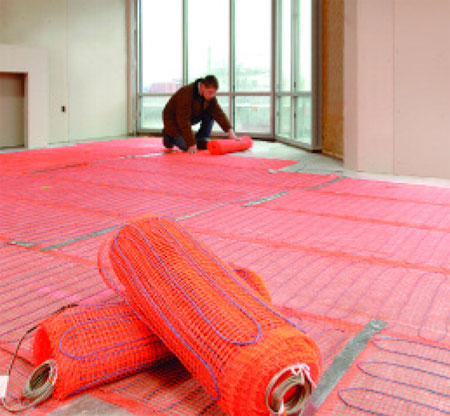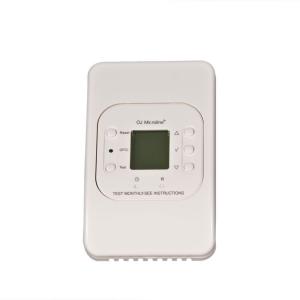Warm floors can make all the difference when you think about making your home comfortable during cold seasons. Radiant heating system supplies heat directly to the floor.
1. Used by the Romans to heat their floors and baths, it’s actually one of the oldest heating systems. The floor was raised by pillars, called pilae stacks, so some air remained underneath, it provided the possibility to use heated air or smoke to heat the floors above.
2. Radiant heat floors are a greener choice as it allows to save energy and even earn you some LEED points.
3. It’s a healthier choice as it allows you to eliminate the dust circulated by forced air systems.
4. It works great with any type of flooring, wood, stone or ceramic tile. Yet stone or ceramic tile is a better choice as it provided heat better. Wood or carpet will serve more as as insulator thus requiring more energy to warm the floor.
5. If wood is a material of your choice, you might consider engineered wood laminate. It won’t expand or contract as much as regular wood floor and it’s thinner that regular wood floor so it will provide heat better. For example, Oak Rustic wide-plank flooring from arrigoniwood.com.
6. There are different types of radiant heat: electric and hydronic.
7. Electric radiant floors use electric elements (heated cables, mesh, preformed mats or elements embedded in plastic films) installed under the flooring materials ( wood or tile).
The most popular are SunTouch and WarmlyYours (TempZone), both using a heating wire secured to a supporting material

8. Hot water (hydronic) radiant floors use water heated by a boiler or water heater that circulates through tubing installed into the concrete floor. Uponor Wirsbo Radiant Heat System is a very good example of such floors.

9. Choosing your option you have to take in consideration the energy costs in your area and the size of the project. Electric systems tend to be less expensive upfront than hydronic systems, according to the Radiant Panel Association, because they are simpler in construction. If you live in an area where electricity is more affordable than other power options, electric could be the way to go. Most systems operate on 120 or 240 volts and require a separate circuit breaker. However, low-voltage systems are available that can operate on as little as 24 volts, using a transformer to reduce the line voltage, according to RPA (see Radiant Heating with Electricity). Some electric radiant systems are intended only for warming floors in specific rooms; others are designed for use as whole-house primary heating.
10. With hydronic systems, you have more flexibility in choosing a power source. The boiler that heats the water can be powered by electricity or almost any fuel (including natural gas, propane, oil and wood). You can also use environmentally friendly alternative heat sources that don’t consume fossil fuels, such as a geothermal heat pump or solar energy. However, you don’t always have to buy a separate boiler. You can save money and use the same water heater you use for hot water and get double duty out of it. New high-efficiency water heaters are available that are powerful enough to provide both space heat and domestic hot water.
11. to calculate the cost of the Radiant Floor Heating you have to add the cost of the installation to the cost of the operation. For example, according to Warmly Yours, to install an electric radiant floor heating system in a 10 ft. by 8 ft. (80 total feet) room will cost roughly $861. This price includes Warmly Yours TempZone mat, programmable thermostat, a splicing kit, and shipping and handling. No we need to add the Cost to Operate Electric Radiant Heating. While it depends on where you are located and the cost of electricity there, you can figure on costs of about $0.50 to $1.00 per day, if the system runs 24 hours a day (regulated by thermostat). A more realistic estimate would be about $0.25-$0.35 per day, keeping the system running within a zone of 8 hours a day in an 8′ x 10′ bathroom.

